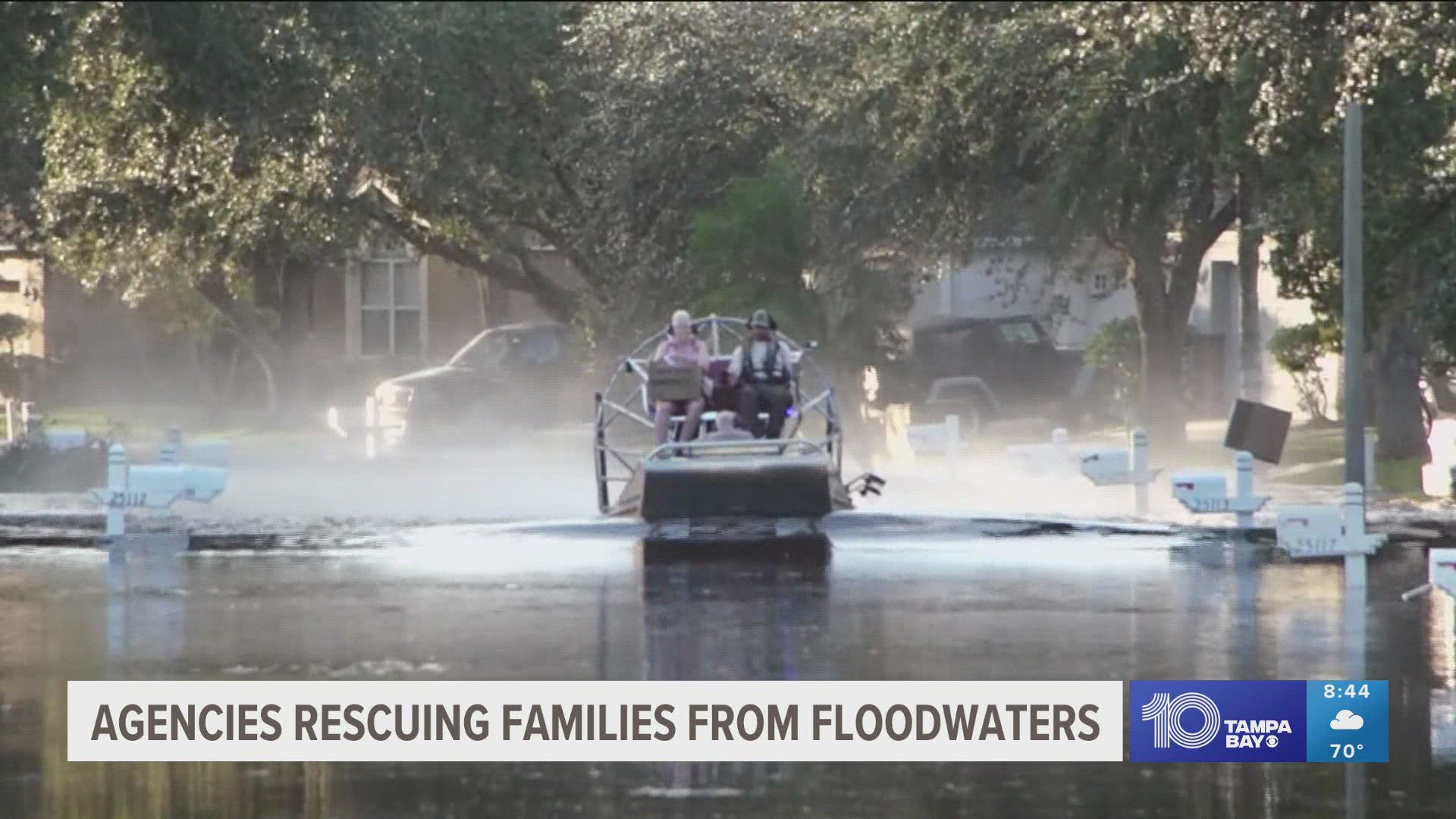NEW PORT RICHEY, Fla. — Parts of Pasco County are underwater after Hurricane Milton brought heavy rain to the area.
Boats are driving where cars used to, USPS mail trucks are submerged and parts of a golf course look like islands in water. Residents and workers had to navigate their way through the floodwaters in rescue boats, and one man was seen pushing his belongings that were floating inside a plastic bin.
New Port Richey was inundated with water from the Anclote River that flooded from the Category 3 storm.
The river near Elfers at Little Road had major flooding over the weekend and crested at 26.57 feet on Friday morning, according to the National Weather Service.
A flood warning is still in effect for the area as the community saw major flooding, but residents will hopefully be able to see the water drain soon.
The river is currently at 23.70 feet and decreasing, as of Sunday afternoon. The flood stage, which is the water level at which a river begins to overflow for the Anclote River is 20 feet.
According to the National Weather Service, at 22 feet, water begins to spill over the roadway along the Elfers Parkway. At 23 feet, evacuation is recommended for the residents of the nearby Anclote River Estates with over 300 homes that may need to evacuate. At 24 feet, homes start to flood.
Waters rise in Pasco County neighborhoods due to Hurricane Milton
How to stay safe during a flood
In the days following the storm, flood warnings have been issued across the entire region, urging people to get to higher ground or evacuate the area before water moves into their homes and roadways.
If you are worried about your home flooding, make sure to have an emergency kit ready and be prepared to evacuate. The National Weather Service advises to charge all electronics and pack bags in advance. If you have time, shut off the water service, gas service and electricity to your home.
After a flood, be sure to avoid floodwaters. Downed power lines can cause electrocution and debris in the waters can be dangerous. Also, don't drive through floodwaters because they can cause stalling or carry a vehicle away.
Click here for the latest flood warnings issued. You can monitor water levels in local rivers on the National Weather Service's flooding forecast map.





















